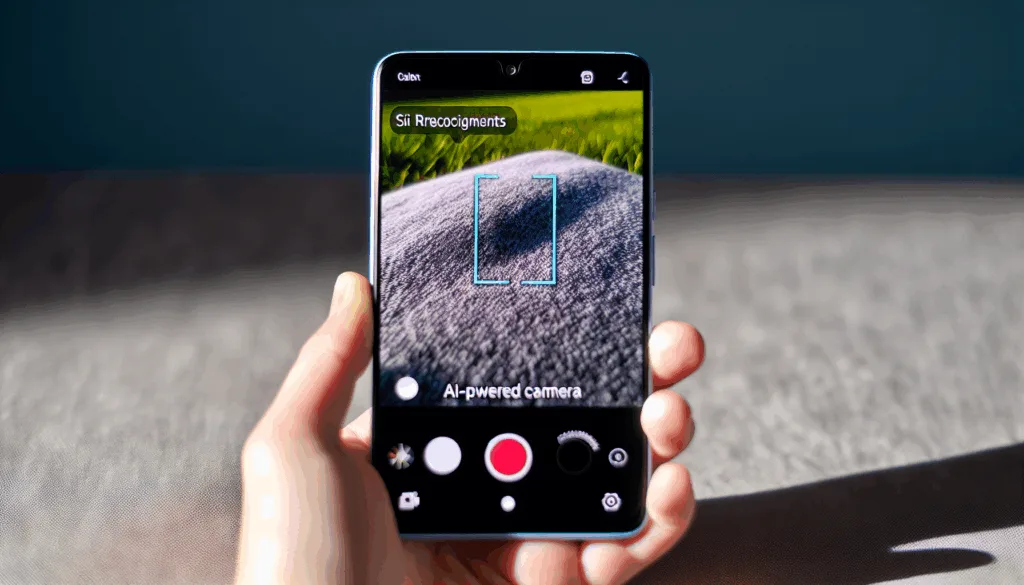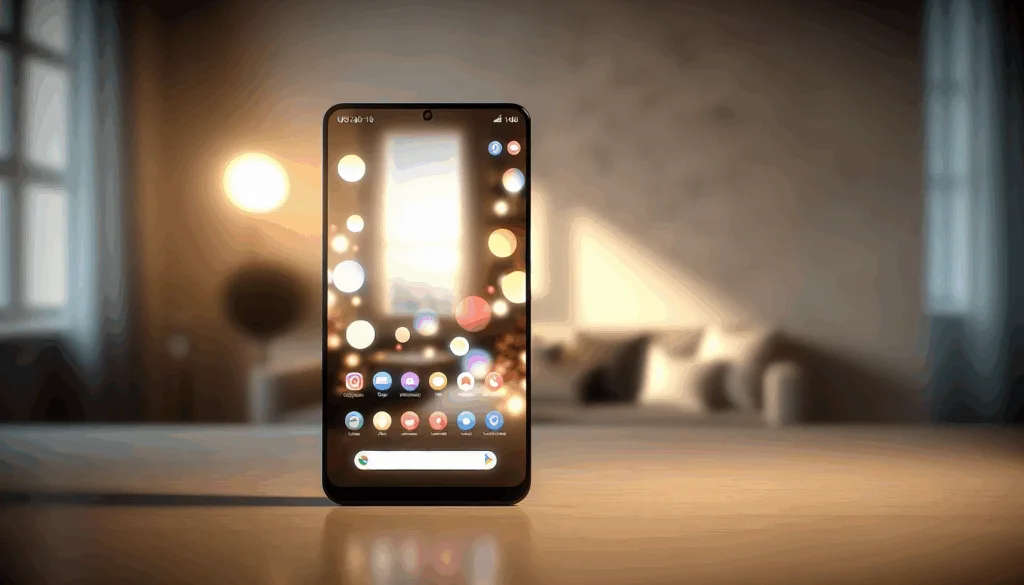Artificial Intelligence in Smartphones: Transforming User Experience
The smartphone, once a mere communication device, has evolved into an indispensable extension of ourselves. This profound transformation isn’t solely due to faster processors or higher-resolution screens, but rather the silent, yet revolutionary, integration of Artificial Intelligence (AI). From the moment we unlock our devices to the myriad interactions throughout the day, AI is meticulously weaving itself into the very fabric of the smartphone experience, making our devices not just smarter, but truly intuitive and anticipatory. It’s a paradigm shift, moving beyond simple automation to genuine intelligence that understands context, predicts needs, and personalizes interactions in ways that were once confined to science fiction.
This isn’t about a single killer app or a flashy new feature; it’s about a pervasive intelligence that enhances every facet of smartphone usage. AI is the unseen architect behind the seamless photo edits, the eerily accurate voice commands, the proactive battery optimizations, and the robust security measures that protect our digital lives. It’s about moving from a device that merely executes commands to one that learns, adapts, and anticipates, fundamentally redefining our relationship with technology. Join us as we delve into the intricate ways AI is transforming the smartphone, elevating user experience from functional to truly phenomenal.
The Dawn of On-Device AI: From Cloud to Edge
For years, artificial intelligence primarily resided in the cloud, requiring constant internet connectivity to process complex tasks. While powerful, this approach introduced latency, raised privacy concerns, and limited functionality in areas with poor network coverage. The advent of specialized AI accelerators, often referred to as Neural Processing Units (NPUs) or AI engines, directly integrated into smartphone chipsets, marked a pivotal shift, bringing sophisticated AI capabilities from the distant cloud right to the "edge" – your device itself.
This transition to on-device AI offers a multitude of benefits, fundamentally enhancing the user experience. Processing data locally means tasks are completed with remarkable speed, enabling real-time applications like instant image recognition or live language translation without any noticeable delay. Furthermore, sensitive personal data, such as biometric information or private photos, can be processed securely on the device, significantly mitigating privacy risks associated with transmitting data to remote servers.
The power of edge AI also extends to offline functionality, ensuring that intelligent features remain accessible even without an internet connection. Imagine navigating a foreign city with real-time object identification or translating a menu in an underground restaurant – these scenarios are now seamlessly possible thanks to the computational prowess embedded within your smartphone. This shift not only democratizes access to advanced AI but also lays the groundwork for truly personalized and always-available intelligent assistance.
Revolutionizing Photography and Videography
Perhaps no area demonstrates the transformative power of AI in smartphones more vividly than photography and videography. Gone are the days when a great photo depended solely on a skilled photographer; today, AI acts as an invisible co-pilot, meticulously optimizing every shot to professional standards. Computational photography, a cornerstone of modern smartphone cameras, leverages AI algorithms to fuse multiple exposures, correct lens distortions, and enhance dynamic range, resulting in images that far surpass what traditional optics alone could achieve.
AI’s influence extends beyond mere image enhancement to intelligent scene recognition and semantic segmentation. Your smartphone can now instantly identify whether you’re shooting a landscape, a portrait, food, or a pet, automatically adjusting exposure, color balance, and focus settings for optimal results. Furthermore, advanced AI can differentiate between subjects and backgrounds, enabling sophisticated portrait modes with beautifully blurred bokeh effects, or even allowing for selective color adjustments on specific elements within a scene.
For videography, AI brings unparalleled stability and clarity. Features like cinematic mode, which intelligently shifts focus between subjects, and advanced video stabilization, which smooths out shaky footage, are direct applications of on-device AI. Even in challenging low-light conditions, AI algorithms can intelligently combine frames and reduce noise, ensuring that your videos are bright, sharp, and professional-looking, transforming anyone into a capable cinematographer.

Intelligent Personal Assistants and Voice Interfaces
The evolution of personal assistants like Siri, Google Assistant, and Bixby stands as a testament to AI’s profound impact on how we interact with our smartphones. These aren’t just glorified search engines; they are sophisticated AI entities capable of understanding natural language, processing complex queries, and even anticipating our needs. From setting alarms and sending messages to providing real-time information and controlling smart home devices, these assistants have become central to the smartphone experience, making interactions more intuitive and hands-free.
The underlying technology powering these assistants is Natural Language Processing (NLP) and machine learning, which allow them to interpret nuances in human speech, understand context, and even learn individual preferences over time. This continuous learning enables them to offer increasingly personalized responses and proactive suggestions, such as reminding you about traffic before your commute or suggesting a restaurant based on your past dining habits. The goal is to move beyond simple command execution to a truly conversational and helpful digital companion.
Beyond voice commands, AI-driven assistants are integrating deeper into the operating system, providing contextual assistance across various applications. For instance, if you receive an email with a flight confirmation, your assistant might automatically add it to your calendar and track flight status. This seamless integration transforms the smartphone from a collection of disparate apps into a cohesive, intelligent ecosystem that anticipates your next move, streamlining daily tasks and enhancing overall productivity.
Enhanced Security and Biometric Authentication
In an age where our smartphones hold the keys to our digital lives, robust security is paramount, and AI is at the forefront of this defense. Biometric authentication, such as facial recognition and fingerprint scanning, has been dramatically enhanced by AI, moving beyond simple pattern matching to sophisticated algorithmic analysis. Modern facial recognition systems, for example, utilize AI to create detailed 3D maps of a user’s face, making them incredibly difficult to fool with photos or masks, ensuring a higher level of security than ever before.
Beyond initial authentication, AI plays a crucial role in continuous security monitoring and anomaly detection. Machine learning algorithms constantly analyze user behavior patterns – how you type, swipe, hold your phone, and even your typical locations. Any significant deviation from these learned patterns can trigger a security alert or prompt for re-authentication, effectively identifying potential unauthorized access attempts in real-time. This proactive approach adds an invisible layer of protection, constantly safeguarding your device and data.
Furthermore, AI contributes to the security of your data by powering features like on-device encryption and secure element integration. It helps manage cryptographic keys and ensures that sensitive information remains isolated and protected from malicious software. By intelligently identifying and neutralizing threats, from phishing attempts to malware, AI transforms your smartphone into a fortified digital vault, providing peace of mind in an increasingly complex cyber landscape.
Optimizing Performance and Battery Life
One of the less visible but equally impactful contributions of AI in smartphones is its role in optimizing performance and extending battery life. Modern smartphone operating systems leverage AI to intelligently manage resources, ensuring that demanding applications run smoothly while background processes consume minimal power. This involves dynamic CPU and GPU allocation, where AI predicts application needs and adjusts processing power accordingly, preventing slowdowns and conserving energy.
AI algorithms learn individual user habits, understanding which apps are used most frequently, at what times, and for how long. This predictive analysis allows the system to pre-load frequently used apps, making them launch almost instantaneously, and to intelligently put less-used apps into a deep sleep state, preventing them from draining battery in the background. This proactive resource management significantly enhances the perceived speed and responsiveness of the device, making the user experience consistently fluid.
Moreover, AI contributes to adaptive battery management, learning your charging patterns and optimizing the charging cycle to prolong battery health over its lifespan. It can also identify and flag power-hungry apps, providing users with insights into their energy consumption. By intelligently balancing performance demands with energy efficiency, AI ensures that your smartphone remains responsive and lasts longer on a single charge, directly addressing two of the most common user pain points.
| AI Application Area | Key AI Technologies Involved | Impact on User Experience |
|---|---|---|
| Photography | Computational Photography, Semantic Segmentation, Neural Networks | Professional-grade photos, intelligent scene recognition, advanced portrait modes, superior low-light performance. |
| Voice Assistants | Natural Language Processing (NLP), Machine Learning, Speech Recognition | Intuitive voice control, contextual understanding, proactive suggestions, hands-free operation. |
| Security | Biometric Recognition (Facial/Fingerprint), Behavioral Analytics, Anomaly Detection | Enhanced security, faster and more reliable authentication, continuous threat monitoring, fraud prevention. |
| Performance | Resource Management, Predictive Analytics, Adaptive Scheduling | Smoother app performance, faster app loading, extended battery life, reduced thermal throttling. |
| Personalization | User Behavior Analysis, Reinforcement Learning, Contextual Awareness | Adaptive UI, personalized recommendations, intelligent notifications, tailored content feeds. |
| Augmented Reality | Object Recognition, SLAM (Simultaneous Localization and Mapping), Computer Vision | Immersive AR experiences, realistic virtual object placement, interactive gaming, practical utility apps. |
Personalized User Interfaces and Adaptive Experiences
The true hallmark of an intelligent device is its ability to adapt to its user, and AI in smartphones is making this a reality through highly personalized user interfaces and adaptive experiences. Beyond simple customization options, AI learns your preferences, habits, and even your mood to tailor the device’s behavior. This includes everything from intelligently organizing your app drawer based on usage patterns to adjusting screen brightness and color temperature according to ambient light and time of day.
AI-driven personalization extends to predictive text and keyboard suggestions, which become eerily accurate over time, learning your unique vocabulary and writing style. Notification management is another area where AI excels, intelligently prioritizing important alerts and silencing less critical ones based on your context and past interactions, reducing digital clutter and cognitive overload. The goal is to create an interface that feels less like a generic tool and more like a bespoke extension of your own mind.
Furthermore, AI can influence content delivery, curating news feeds, music playlists, and even app recommendations based on your evolving interests and past consumption. This creates a highly relevant and engaging digital environment, ensuring that the information and entertainment you receive are precisely what you’re looking for, often before you even realize it. This level of adaptive intelligence transforms the smartphone from a static device into a dynamic, evolving companion.

Augmented Reality (AR) and Immersive Applications
Augmented Reality (AR) is another frontier where AI is fundamentally transforming the smartphone experience, blurring the lines between the digital and physical worlds. AI’s role in AR is critical, enabling real-time object recognition, spatial mapping, and accurate tracking of virtual objects within a live camera feed. This allows smartphones to overlay digital information, graphics, and interactive elements onto our real-world view with remarkable precision and stability.
From practical applications like measuring furniture dimensions before a purchase to visualizing how a new sofa might look in your living room, AR powered by AI offers tangible utility. Navigation apps can overlay directions directly onto the street view, making it easier to find your way in unfamiliar surroundings. Educational apps can bring historical artifacts to life in your living room, offering immersive learning experiences that were previously impossible.
The gaming industry has also embraced AI-driven AR, creating immersive experiences where virtual characters interact seamlessly with your physical environment. Games like Pokémon GO were just the beginning; newer titles leverage advanced AI to enable more complex interactions, realistic physics, and persistent virtual objects that remain in place even when you leave and return to a location. This fusion of AI and AR is opening up entirely new dimensions of entertainment and interaction, making the smartphone a portal to mixed realities.
The Future Landscape: Pervasive and Proactive AI
As we look ahead, the integration of AI into smartphones is poised to become even more pervasive and proactive, moving towards an era of ambient intelligence. Future smartphones, powered by increasingly sophisticated NPUs and advanced machine learning models, will not just respond to our commands but will anticipate our needs with uncanny accuracy, often before we consciously articulate them. This could manifest as devices intelligently adjusting our environment, managing our schedules, and even monitoring our health without explicit input.
The evolution of AI will also lead to more seamless and natural human-computer interaction. Imagine a smartphone that understands complex emotional cues in your voice, adapts its responses accordingly, or even learns to mimic your communication style for specific tasks. This deeper level of contextual understanding will transform the smartphone into a truly intuitive digital companion, capable of handling multifaceted requests and providing truly personalized assistance across all aspects of daily life.
However, this future also necessitates careful consideration of ethical implications, particularly regarding privacy and data security. As AI becomes more deeply embedded and predictive, the responsibility to ensure transparency, user control, and robust ethical guidelines will become paramount. The journey of AI in smartphones is far from over; it’s an ongoing evolution that promises to continue redefining what’s possible, making our devices not just smart, but truly intelligent extensions of ourselves.
Conclusion
The journey of Artificial Intelligence in smartphones has been nothing short of revolutionary, fundamentally transforming the user experience from a series of discrete interactions into a seamless, intuitive, and highly personalized digital existence. From the silent power of on-device AI that enhances privacy and speed, to the dramatic improvements in photography, the uncanny intelligence of voice assistants, and the fortified layers of security, AI has elevated the smartphone beyond a mere gadget into an indispensable, intelligent companion. It’s the unseen force that makes our devices feel more alive, more responsive, and more attuned to our individual needs.
Key Takeaways:
- Edge AI is Key: The shift from cloud-based to on-device AI (via NPUs) has enabled faster, more private, and offline capabilities.
- Transformative Impact: AI has revolutionized core smartphone functions like photography, voice interaction, security, and performance optimization.
- Personalization is Paramount: AI learns user habits to create adaptive interfaces, intelligent notifications, and highly relevant content experiences.
- AR’s Potential: AI is the backbone of immersive Augmented Reality applications, blurring the lines between digital and physical worlds.
- Future is Proactive: Expect even more pervasive, anticipatory AI, requiring careful ethical consideration alongside technological advancement.
As we continue to push the boundaries of what’s possible, AI will remain at the heart of the smartphone’s evolution. It’s not just about making devices smarter; it’s about making them more human-centric, more intuitive, and ultimately, more integral to our daily lives. The smartphone of tomorrow will not just be a tool we use, but a truly intelligent entity that understands, anticipates, and adapts, continuing to redefine our relationship with technology in ways we are only just beginning to imagine.

